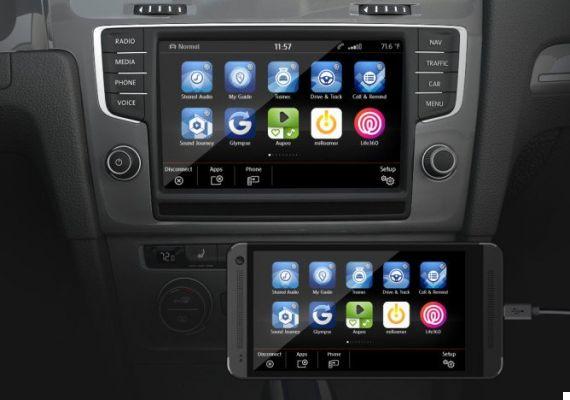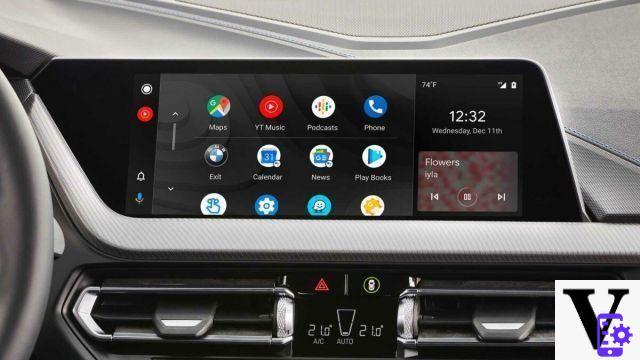Where does Android Auto come from?
Let's start already with the historical part, since Android Auto, contrary to what one might think, does not date from yesterday. It all started in January 2021, when Android Auto took its place in the Open Automotive Alliance, bringing together 28 major players in the automotive and mobile technologies sectors such as Audi, the Renault Nissan Alliance and Nvidia. A few months later, in June 2021, Android Auto was officially presented, with a first official release on March 19, 2021.
Everything follows quite quickly then, since two months later, Korean automaker Hyundai became the first manufacturer to offer Android Auto support, making it available for the first time in the 2021 Hyundai Sonata, a fairly high-end sedan marketed in South Korea and the United States in particular. Time passes and Google continued to improve its in-car system, seeing that the number of users was constantly increasing, especially in the face of in-car infotainment systems that were already quite obsolete at the time.
In July 2021, Android Auto received its first major user interface overhaul. Among the many new features presented, there were several applications specific to Android Auto that can be used from the driving position, while the Android Auto application itself disappeared in favor of the Google Assistant driving mode. For almost two years, Google has been working on the extension of Android Auto for several countries.

The beginnings of Android Auto in 2021.
What is Android Auto used for?
Android Auto is a version of Google's Android mobile operating system designed to integrate into automotive dashboards. This is how we could succinctly define Android Auto. It allows smartphones and tablets running the Android system to interact directly with the vehicle's infotainment system equipped with a touch screen (or even a screen at all), to deport smartphone controls to the dashboard.
This allows you to take advantage of Google applications dedicated to driving, such as GPS navigation for example, directly from the screen of your car. It also allows the playback of multimedia content (music, not videos obviously for obvious security reasons), SMS, telephony and Internet research. Like the Android system, functions can be added by applications. Manufacturers do not hesitate to integrate their own applications directly into the Google interface.
What are the advantages with Android Auto?
The main advantage of Android Auto, it's to have an interface similar to that of your smartphone. So it's already pretty good in terms of ergonomics, where some onboard systems are catastrophic in this area. Then, you can have fingertip access to several very practical applications, including Waze in particular, the on-board navigation system based on the principle of participatory production. In the same vein, it is also possible to use Google Maps for navigation, with rather convincing real-time traffic, even if the application is not based on a participatory principle like Waze.
The benefits of using Android Auto are not limited to browsing, although this is the general reason people use it for this reason. To reply to an SMS or a message received on WattsApp without taking your phone in hand, it is also practical, since it is possible to have the received message dictated and to also reply using the Google Assistant. Always via the Google Assistant, or with your fingertips, it is also possible to listen to your favorite playlist, even if this is not a big novelty in itself since the Bluetooth integration on cars allowed it. already.

Which cars are compatible with Android Auto?
A lot. There are now more than 500 models compatible with Android Auto. We are obviously not going to list them all for you here, but the official Android Auto website allows you to test the compatibility of your car with the Google on-board operating system. If your car is compatible, you will then have to check if it can work with your phone. If your device has Android 9 or earlier, you will need to download the Android Auto app to your phone. From Android 10, Android Auto is natively integrated; so you don't need to download the app.
How to configure Android Auto in your car?
If your car is compatible with Android Auto, the next step will be configuration. As stated above, if your phone is equipped with Android 9 or earlier, you will need to download the Android Auto application. To do this, you will need to access the Google Play Store and then download it. You will then have to launch it each time you hit the road. For the most recent phones, from Android 10 therefore, Android Auto is integrated and downloading the app is not necessary.
Connect to Android Auto wirelessly
Many brands and models of vehicles and phones are compatible with Android Auto in wireless mode. Availability is changing rapidly and varies depending on the geographic area and the level of finish of the vehicle. If the car display is compatible with wireless connection, you need to pair your phone with your car's bluetooth for installation.
After configuration, depending on your car still, either the phone will automatically connect as soon as you get into your vehicle, or the Android Auto app icon will be displayed on the screen.
So make sure you have a smartphone running Android and compatible with an active data plan, 5 GHz Wi-Fi compatibility and the latest version of the Android Auto app. Wireless projection is compatible with the following versions of Android:
- All phones with Android 11.0
- A Google or Samsung phone running Android 10.0
- A Samsung Galaxy S8, Galaxy S8 + or Note 8 running Android 9.0
Connect to Android Auto wired
It will certainly still be the most popular way to connect with Android Auto: the good old USB-A or USB-C cable (although cars equipped with USB-C sockets are, in the majority of cases, compatible with Android Auto. wireless). Be careful, not all cables necessarily work, make sure the cable has the USB icon.
To connect your wired phone, make sure you have an Android smartphone running Android 6.0 (Marshmallow) or later, an active Internet plan and the latest version of the Android Auto app.
The voice assistant, the centerpiece of Android Auto
The strength of Android Auto, it's the integration of the Google Assistant that keeps your eyes on the road and your hands on the wheel. As stated above, it is possible to "listen" to a message received and to dictate the response, without taking your eyes off the road. All of this is possible with voice control, where you can search for directions, listen to your favorite songs or even check the weather forecast by simply saying “Hey Google” before asking what you want.
It all depends on your car, again, but if it is equipped with voice recognition, you will just have to say "Hey Google", or else press the voice assistance button (usually located on the steering wheel), to give your indications. And for cars that don't have one, there's a microphone icon built right into the screen interface.

What apps can you find on Android Auto?
There are many, very many applications compatible with Android Auto. As always, there are some that we use more than others, especially in cars where the main activity is driving. Usually.
The main navigation applications:
- Google Maps
- Waze
- Coyote
- ChargeMap (for electric and plug-in hybrid cars)
- TomTom Go Navigation
The main messaging applications:
- Messenger
- Skype
- Who
- Telegram
- Hangouts
The main music applications:
- Spotify
- Deezer
- Amazon Music
- Google Play Music
The main audiobook applications:
- Audible
- Audiobooks
- Google Play Books
To follow us, we invite you to download our Android and iOS application. You will be able to read our articles, files, and watch our latest YouTube videos.

Android Auto
Download Android Auto Free APK

























